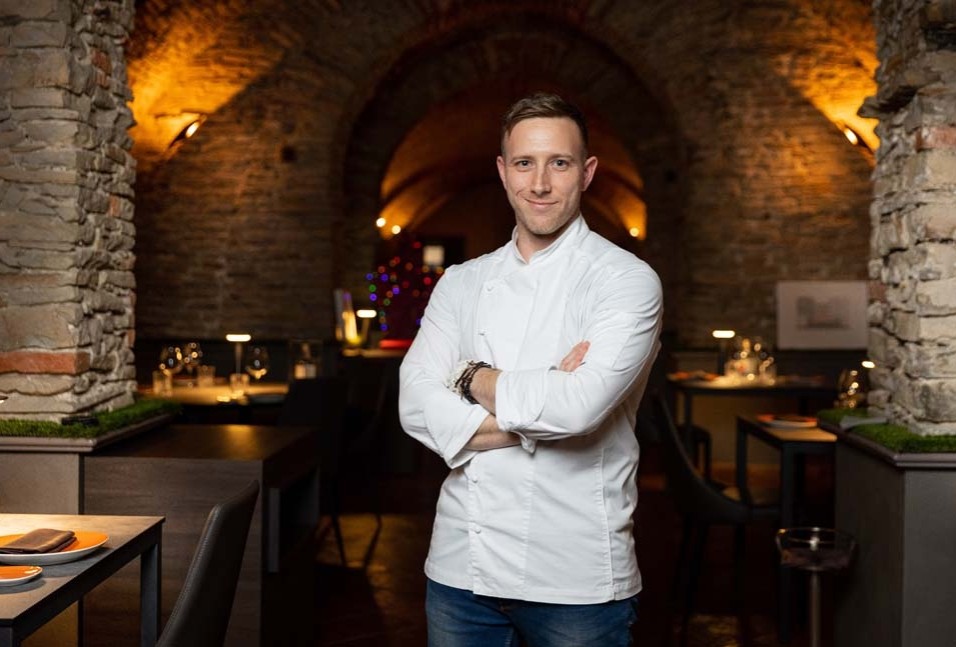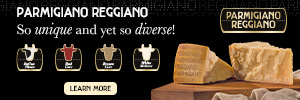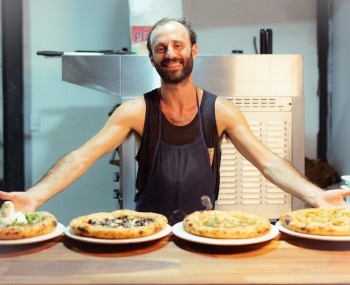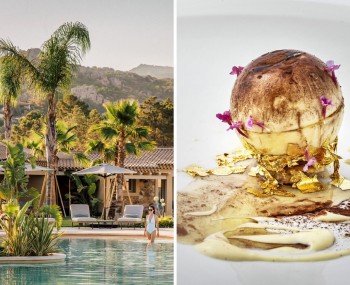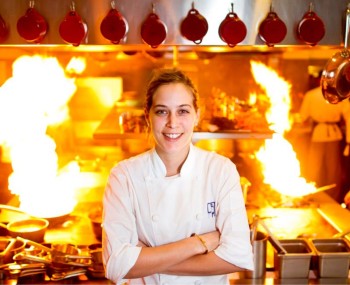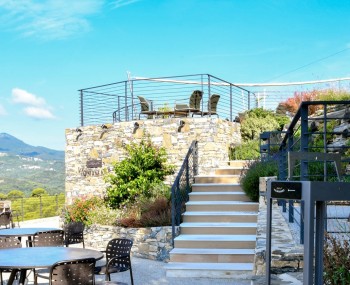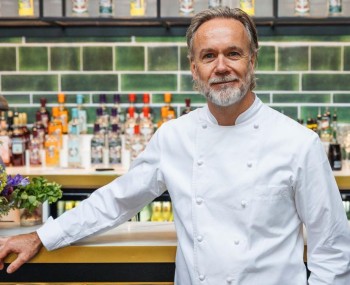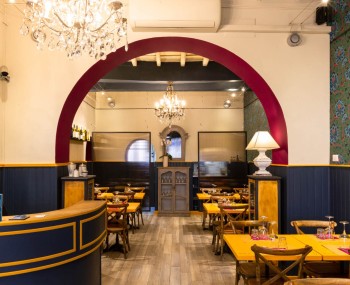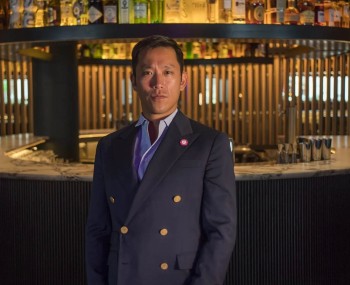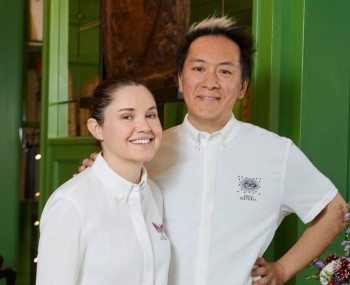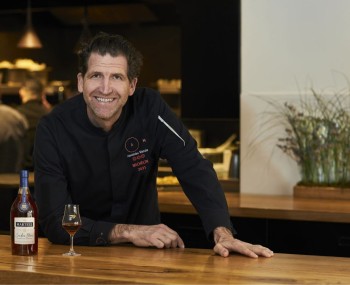He "went back to school" in Hong Kong and now heads the kitchen of Guido da Costigliole, a renowned Alciati family restaurant with 60 years of history behind it. Good luck to Fabio Sgrò, who is already surprising diners with bold dishes.
Guido Da Costigliole
The Restaurant
It only took a few months at Rocca di Arignano, where Ugo Alciati was a consultant for the relaunch of the restaurant, for the spark of trust to be ignited. Evidently, Fabio Sgrò was the right chef at the right time, and Ugo, having to cope with the departure of his Executive Chef Luca Zecchin, did not think twice. From Rocca to Relais, the step was quick. Not least because, for a chef born and raised in Piedmont, the call from "an institution" like the Guido da Costigliole restaurant inside the Relais San Maurizio at first stuns and then sounds irresistible.
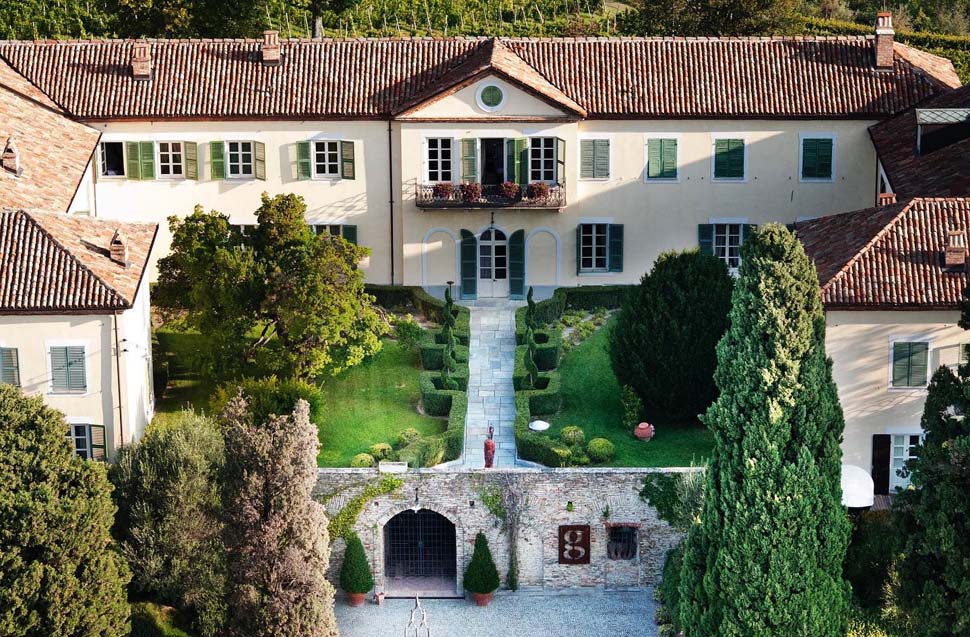
"In China, I realized I knew nothing." Fabio Sgrò uncovers his cards right away and is not afraid to confide how much his interaction with Asian culture, Asian cuisine, and with his majority Asian team dismantled his - now evaporated - know-it-all attitude and provoked a stream of self-awareness, resulting in a fresh start. Something far from trivial. Fabio, along with his wife Sonia, spent almost four years in Hong Kong, leading the kitchen at La Piola, called by Umberto Bombana - no introduction needed - the owner of this and several other establishments across Asia.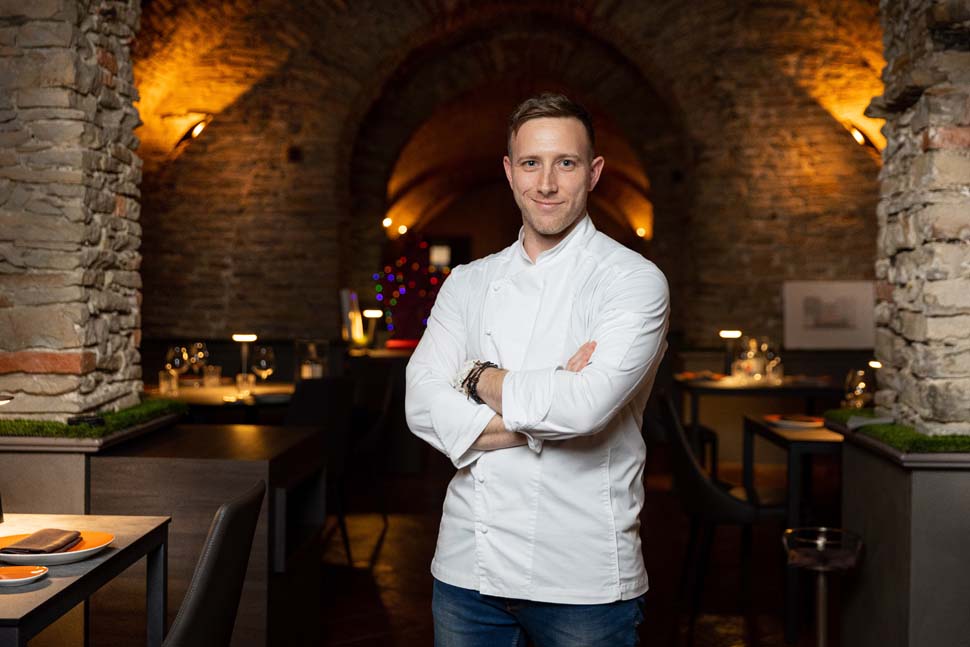
We chat while seated at a large round table for twelve. From the ceiling hangs a spectacular installation by Valerio Berruti, an artist from Alba, whose poetic work Omnia invokes innocence, tenderness, and hope with essential, though marked, depictions of children watching and wondering. Their vision of the world – in which wonder, and discovery have not been put in the attic – seems to be the same as Chef Sgrò's, who returns from the other world with his eyes opened wider than before.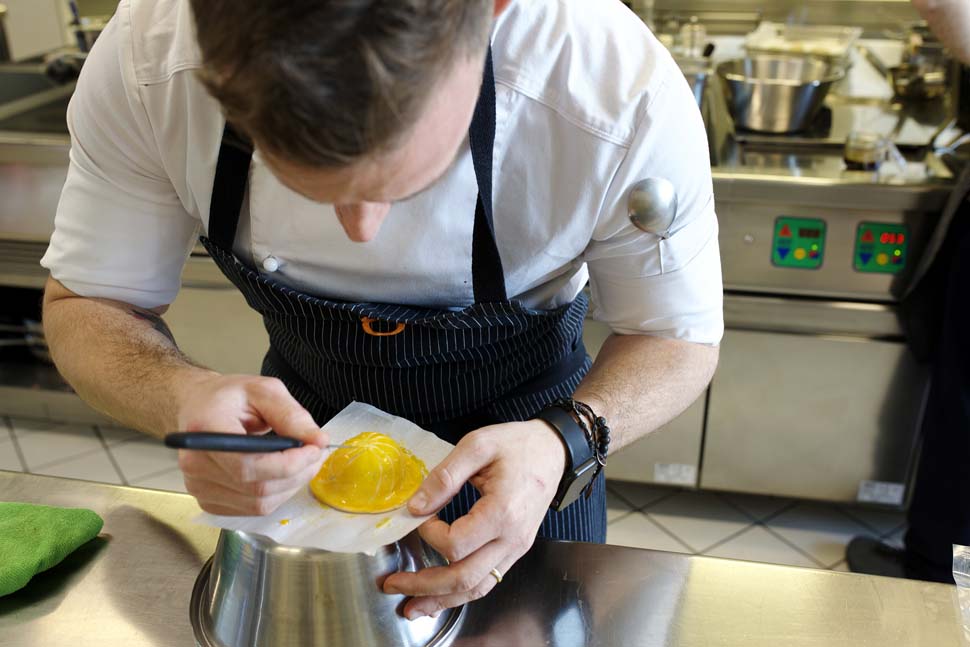
"In Hong Kong, if a commanding attitude prevails, if you start shouting or splashing around in the kitchen, you risk losing everyone. A chef I knew reprimanded a member of the brigade in front of everyone in a very heated tone...the next day, no one showed up, and he had to take care of the whole lunch service himself. When I happened to reprimand a brigade cook a little louder, I noticed that they all turned to me. I quickly got my act together and realized that it is much better to talk face-to-face with each team member, and to grow together. Even if you don't have phenomena, the important thing is always to give stimulation and confront each other, asking even trivially, what do you think of this dish, so they give you 100 percent in the kitchen as well as respect."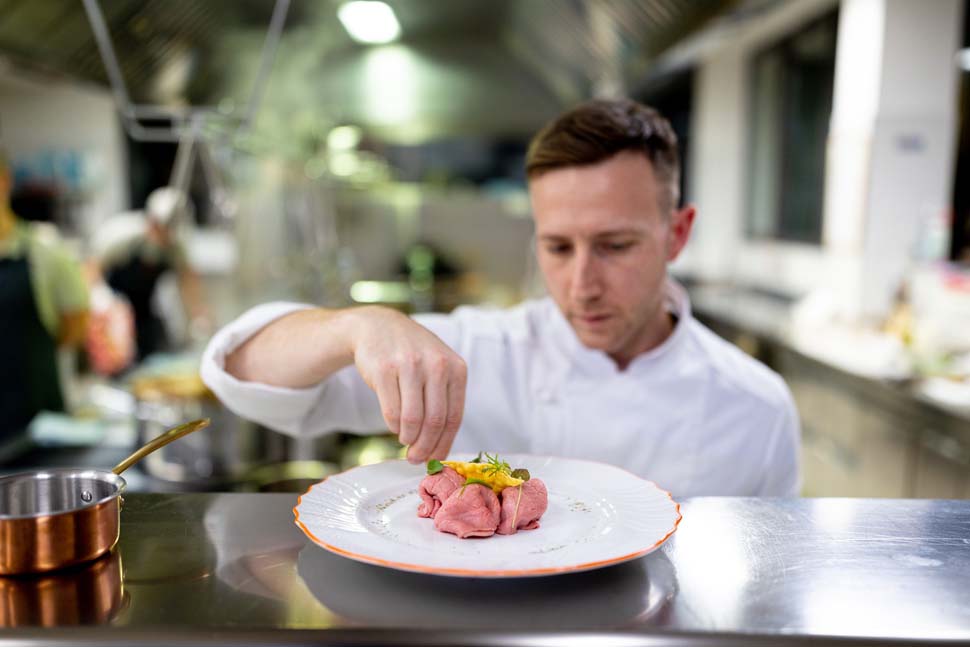
Fabio treasures these lessons. Even more so with the employers that life currently has in store for him. "Andrea, Ugo and Monica are the best. I have maximum freedom on everything, I have no interference, they don't put chains on me, and I run everything. They tell me, try it, go ahead. They asked only one thing of me: to keep the supplier for the filling of the historical plin the same. Lidia, Guido's wife. I changed the portions of meat and the process of making them – marinating overnight before cooking – as well as the supplier of the vitello tonnato (a typical Piedmontese dish of thinly sliced roast veal topped with a tuna sauce). I wash the capers in vinegar, as was done in the old recipes. All these changes of a historic family dish, they accepted willingly, and when they tasted it, they were overjoyed."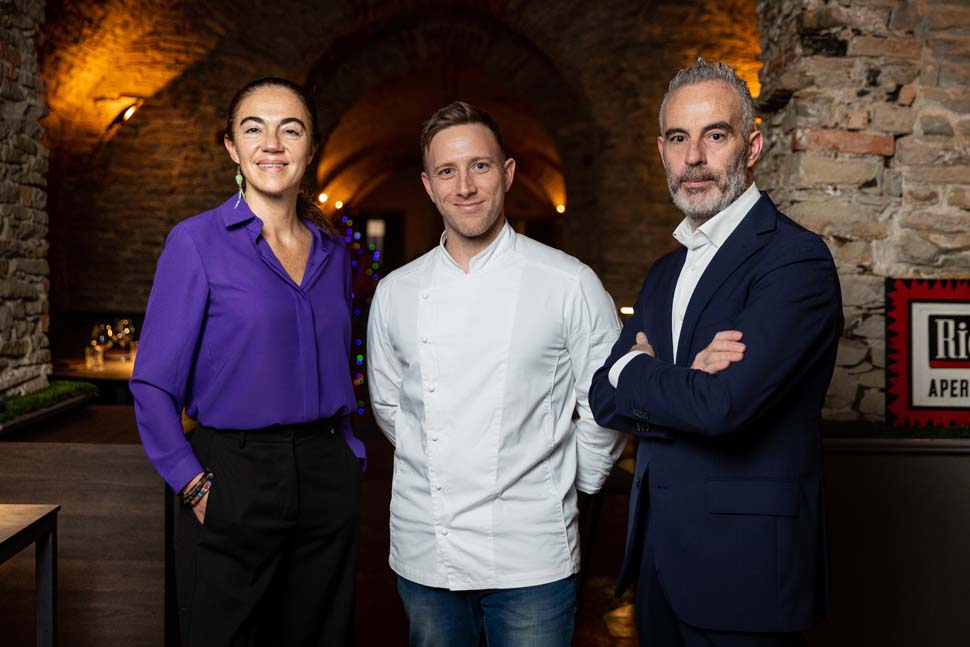
Is this a new Piedmont? In part, yes, influenced by marinating techniques and sauces that Fabio learned while in Hong Kong. "A colleague of mine in Hong Kong, Mitsuru Konishi – currently the chef at Zest restaurant – worked for a lifetime in France. He left me with impressive French basics. As well as Japanese techniques. To this day, I still think, but how would Konishi have done this." In those years, during his day off, Fabio would go to a Japanese restaurant to freely work and learn about a cuisine previously unknown to him.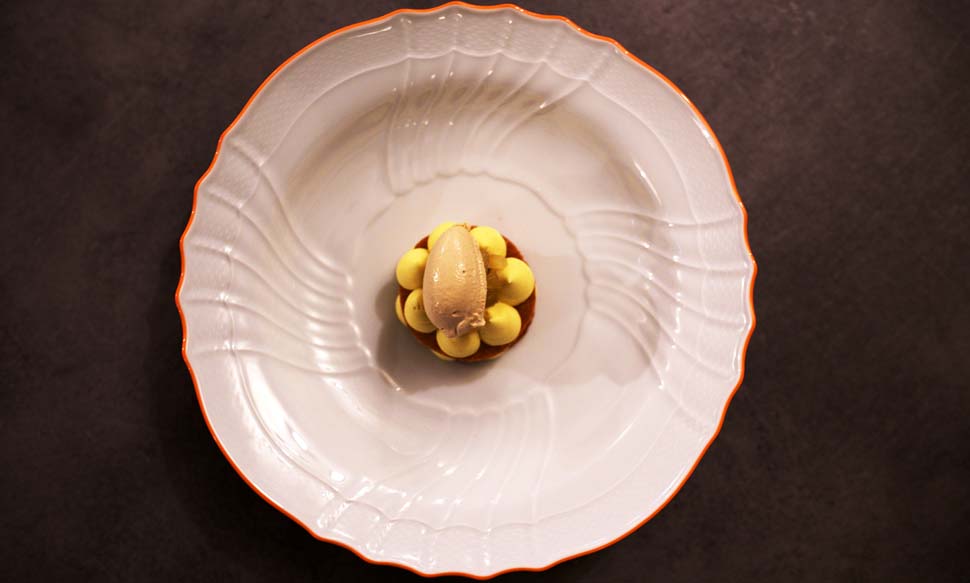
"I worked for free in a traditional Japanese restaurant where you had to ask permission to enter. The first six weeks, they put me in a corner watching, I would come up and say, if you want, I'll make you fried food. Not tempura, eh, for that you had to have their absolute trust, and in the end, it’s not like they even gave me the batter recipe. I would see bubbles with oil that they kept taking out and putting in the refrigerator. After two months, they allowed me to make something. Eventually, a few recipes they passed on to me."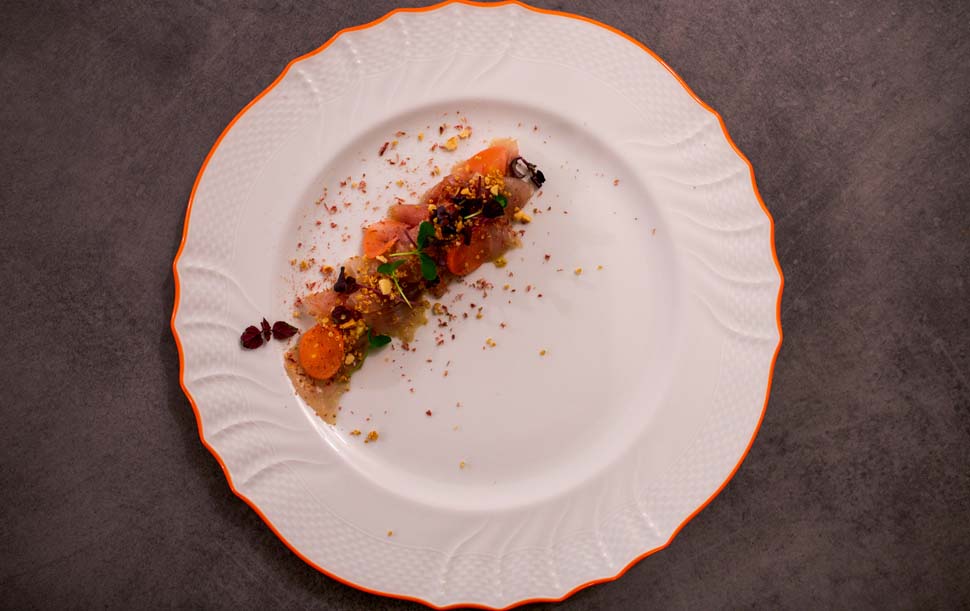
Fabio is on the first menu. Leaving aside the rigor required to repurpose the "house" dishes, everything else required pure creative thinking. Fabio focuses on a few things but with a radical approach. The ingredients, the simplicity of the dish presentation, and the encounter for the diner. Three elements that, for many reasons, connect. The first is based on local sourcing. Everything he needs comes from Piedmont or just beyond. In the surrounding area, he explains, he can find everything except fresh fish, for which he goes to nearby Liguria.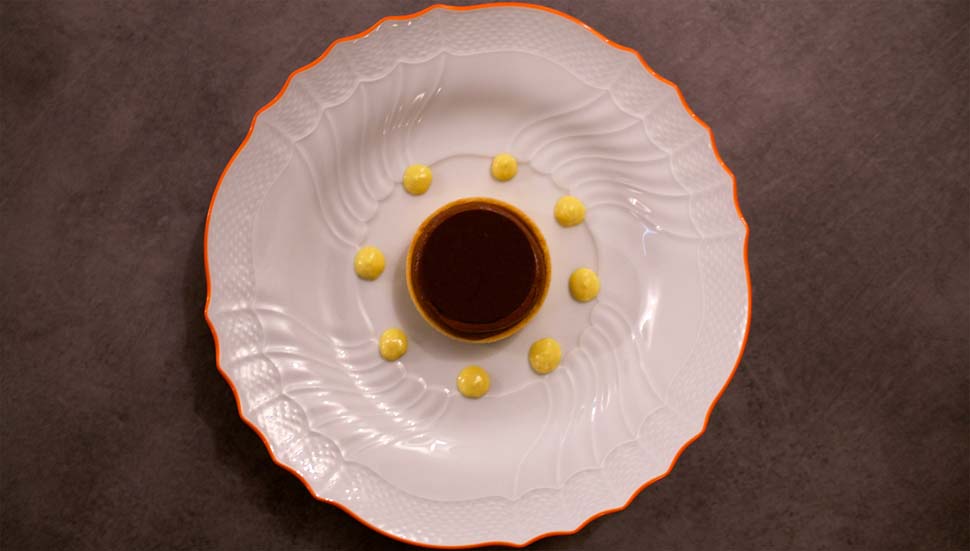
"Even for pigeons, I found a very good, certified farmer nearby. I get tench (a fish) in Ceresole d'Alba, at the Slow Food Cascina Italia presidium, which gives us phenomenal products; I also get eels from him. I buy meat here in Santo Stefano Belbo from Fantoni. I call, and it arrives in a few minutes. We make miso, koji, soy sauce, and kombucha. The culture of fermentation hovers in our kitchen but with 100% local raw material." The fermented part will, in all cases, be a minimal intervention on the plate so as not to risk the ingredient being cannibalized. However, fermentation brings advantages from a flavor perspective, making great assists for zero-salt proposals. Such as turbot marinated in homemade soy and cooked with a Chinese barbecue sauce. A dish that Fabio will soon include on the menu, accompanied by fermented cauliflower.
Simplicity is about the presentation of the courses. I’m not searching for the wow effect at first glance but rather at first taste. All the main courses will always be divided into two plates, one for the leading main ingredient and the other for the side dish. This minimalist choice surely calls for another concentration of taste, as we experienced in the pigeon we will discuss in a moment. Simplicity is also in his interpersonal approach. According to the maxim, “ask, and you shall receive” will help you move ahead. If you always go at it alone, sooner or later, you stop.
Our conversation moves to Fabio’s philosophy of “all I know is that I don’t know.” It begins with the brigade, who are all involved in thinking about the ingredients and reducing waste and continues with listening to the suppliers, such as in the case of Fantoni, who suggested to him to use local goat instead of lamb for a dish he was creating. No sooner said than done. Within minutes, Fabio gets early dibs on the best goats in the area, to be delivered from March onward. He confides to us that he is bonding well with Fantoni, who asks a lot of him, resulting - he laughs - in annoyance at times. Confrontation goes hand in hand with sustainability; in the sense that it generates a highly sustainable climate in the kitchen. Collective tastings, even with the room, aim to create an extended team where understanding and support are maximum. At Guido's, tables above ten people are very welcome, as are children. From October to mid-December, every night was a Saturday night, with groups as large as 15 people. The dining room also lends itself to the entertainment of select dishes that are finished table-side.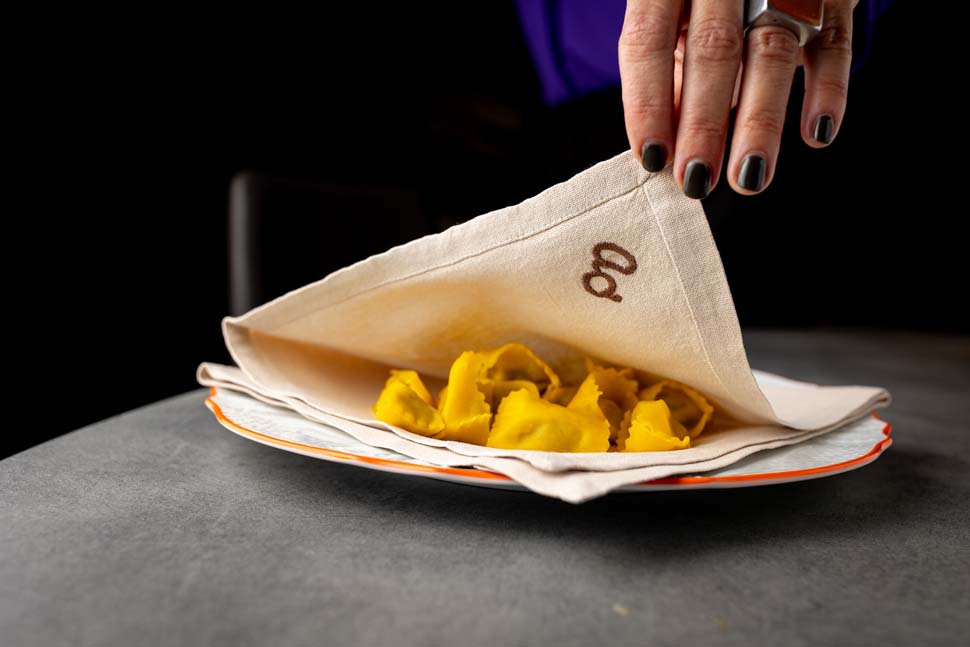
"No one can be great without a united team that supports and endures with you. Having the cooks experience front of house is useful in helping them understand the dynamics of service. And vice versa. If a table arrives at 9 p.m. and after 30 min they still haven't ordered, you don't need to huff but understand the dynamics. Maybe they haven't read the menu yet because they are lingering in chit-chat with each other. Or, the waiters are taking the right amount of time to explain the dishes, and it takes very little for clients to want to come back for more. In the kitchen, you don't have to get upset because, on certain dishes, the narrative must be comprehensive. Our real employer is the customers, who pick up the phone and come back to us."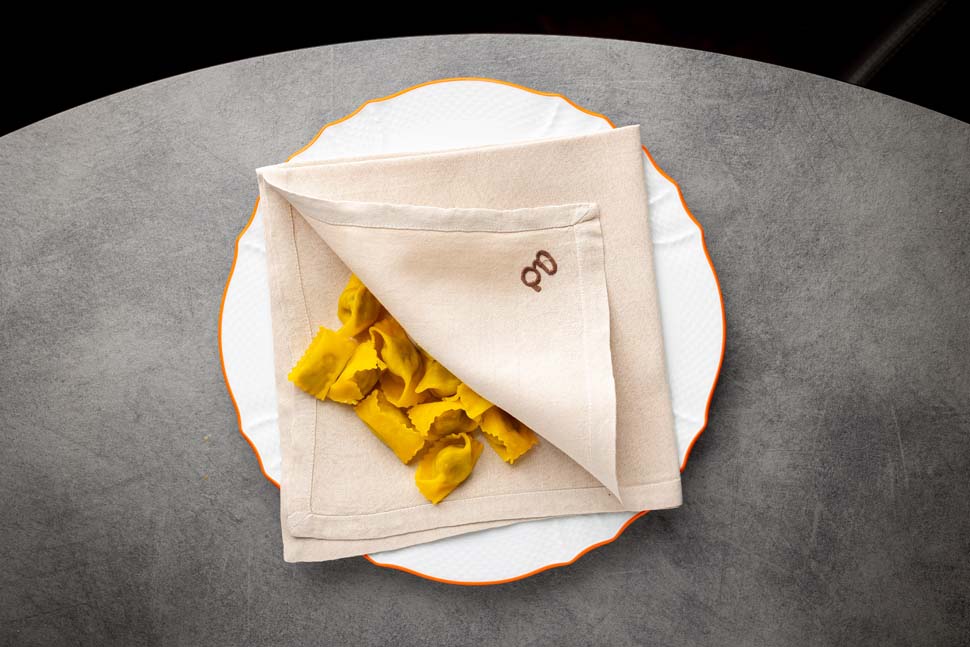
The Dishes
For the reopening, which will be in March, Fabio will propose all his own dishes. However, we should say his and the brigade’s. Since it would be hypocritical to exclude that listening and confrontation weren’t a big part of the dishes’ conception. "I no longer look at the name of the chefs to who they have become. But at the idea of what they do. I look at the lines of thought. It's a peek into other people's gardens. If other people's gardens are green, I, by default, am happy. If, on the other hand, it is drying up, I am really sorry." For one of the new first courses on the menu, Fusilloni, pil pil, cod carpaccio, and pomegranate, Fabio exercised one of his fixations and challenged the commis in charge of the first courses: pil pil (a method of cooking cod that comes from the Basque Country). From there came the shared idea of cooking the pasta alla risotto in pil pil, using raw cod carpaccio freshly marinated in oil and salt, cubes of fermented potato to give acidity, and closing with three powders made from pomegranate, burnt onion, and cod skin.
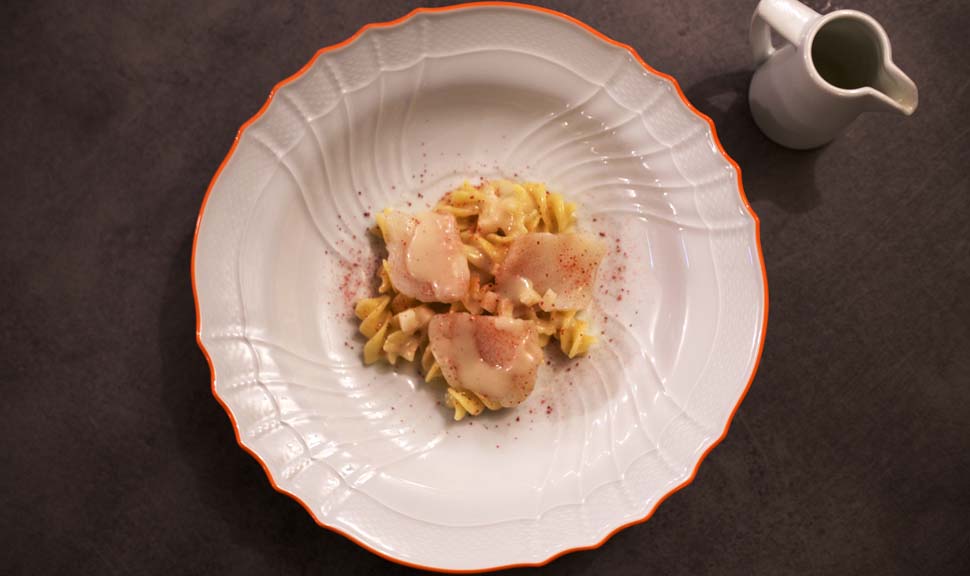
Fusilloni, pil pil, cad carpaccio and pomegranate
He did the same for a gyoza-like raviolo with a lean filling made from wild herbs gathered in the area, topped with fermented onion powder and black truffle. We did not taste it but would have liked to. Fabio often goes around foraging in the surrounding area. When he was still living with Chef Zecchin, he had noticed long-stemmed flowers that looked like small sunflowers. He started digging and found beautiful Jerusalem artichokes. Fabio makes no secret of the fact that he wants to invest in Santo Stefano Belbo, of his life and growth. The preparation of soybeans is a savory indication of this planning. " That I put up the soybeans, which will be ready at the beginning of 2025, already tells you. I want to be here. I learned how to make soy there, and they make it at home. I asked one of my boys, who passed me his mom's recipe that came from his grandma. I use soybean, and instead of chili I put a raw bell pepper, then charcoal, soybeans, and water. In glass jars to ferment. It will make about 35 liters. It will be ultra-concentrated, with a consistency like good, aged balsamic vinegar. It will be a very different soy from what we are used to in sushi restaurants, thicker and with roasted aromas."
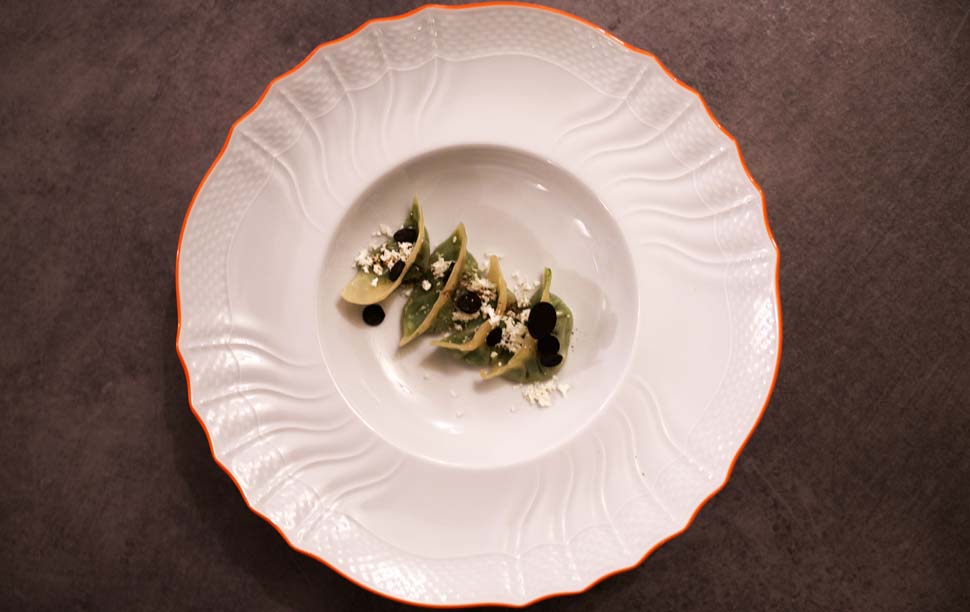
Gyoza with wild herb filling
The second dish we preview is the pigeon. We witness a minimalist presentation: breast, thigh, and tenderloin on a plate, laid on a base made from the bones and then flavored with whipped butter and aged with rice koji. The pigeon and chicken liver pate are served with flaky bread. On a third plate, the seasonal side dish, i.e., beet salad and raw shallots, and baked squash. Before cooking, the breast is matured for ten days in beeswax that comes from a company in Sommarivo.
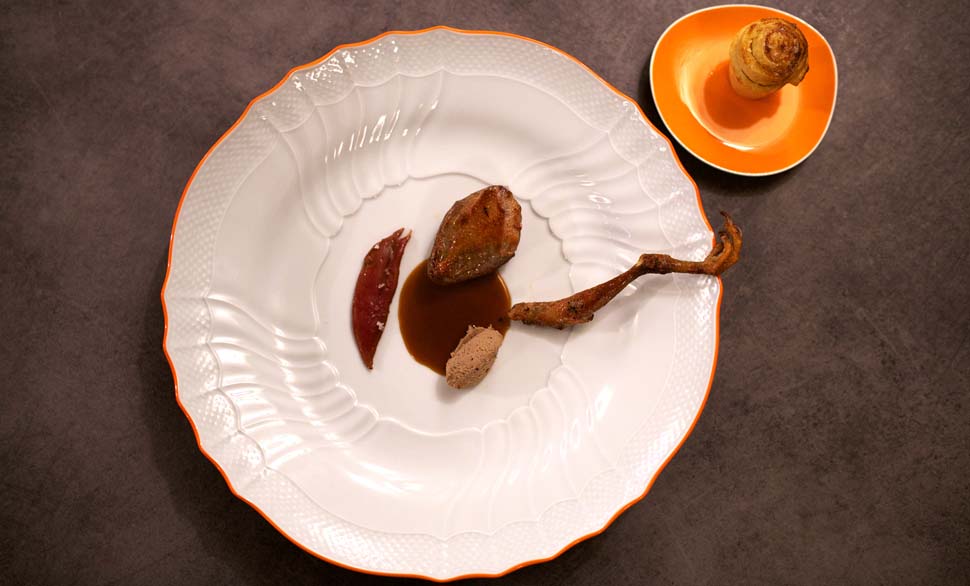
Breast, thigh, and filet of pigeon
The rest of the menu speaks the language of happy local tradition: balls of vitello tonnato, plin served dry in a napkin. In a magnificent place, where the hills of the Langhe take your breath away, to stop in the ancient cellars of a monastery that later became the Relais San Maurizio is to enter the frame of mind of a young chef without too much ambition but still has fire inside. One who has taken his craft, and the craft of living seriously.
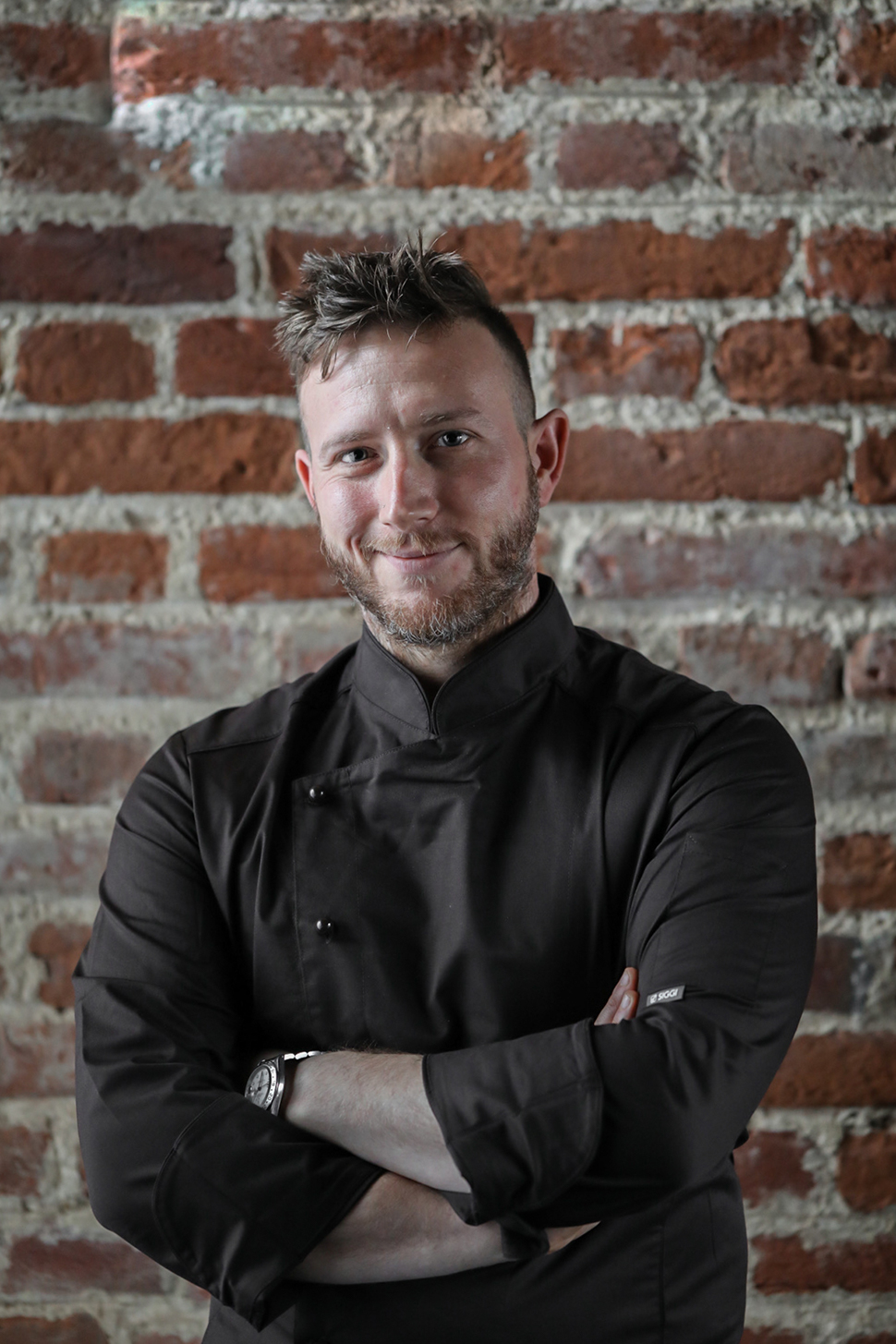
Address
Guido Da Costigliole
Località San Maurizio, 39, Santo Stefano Belbo, Italia
Tel: 0141 844455
Website


